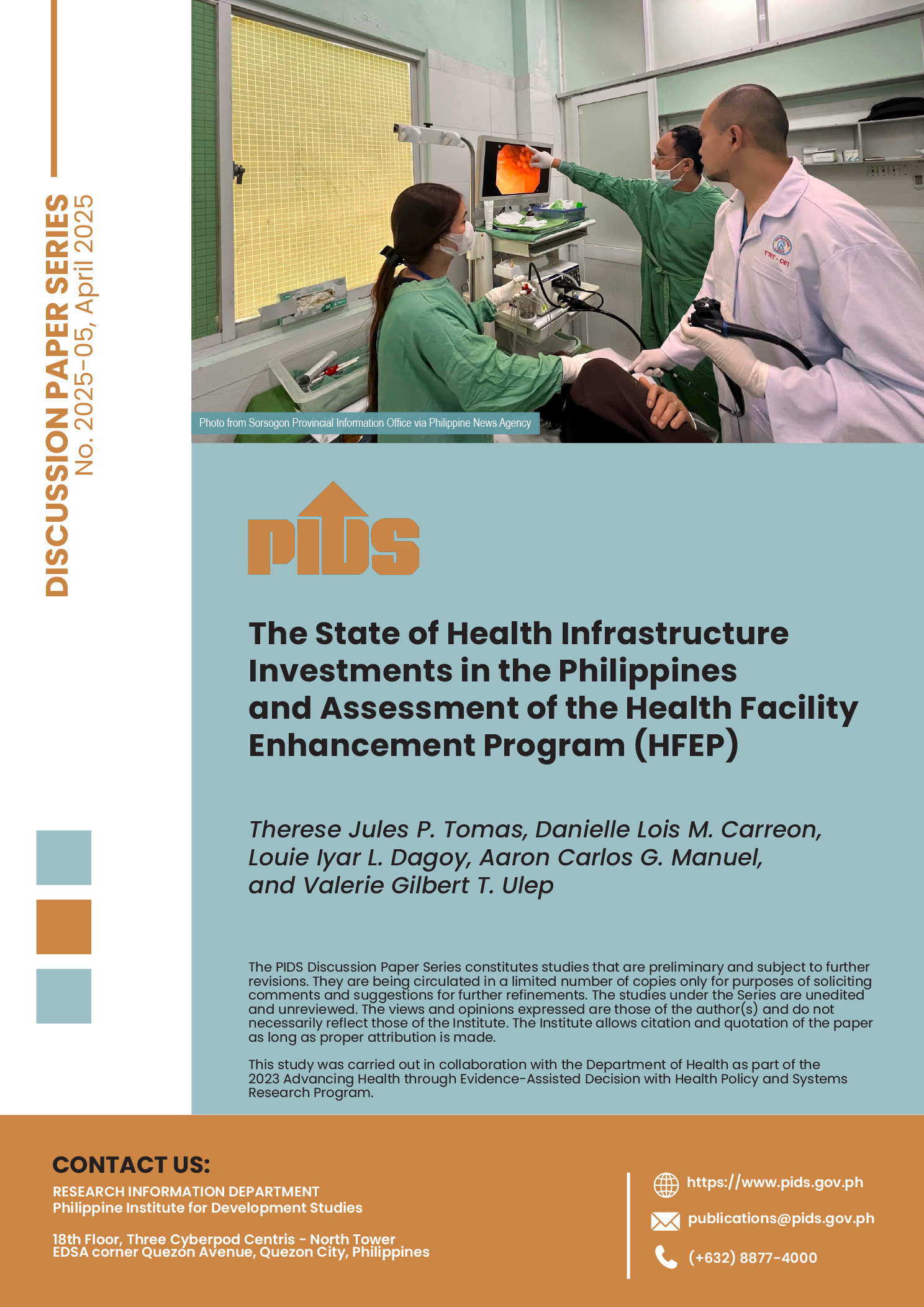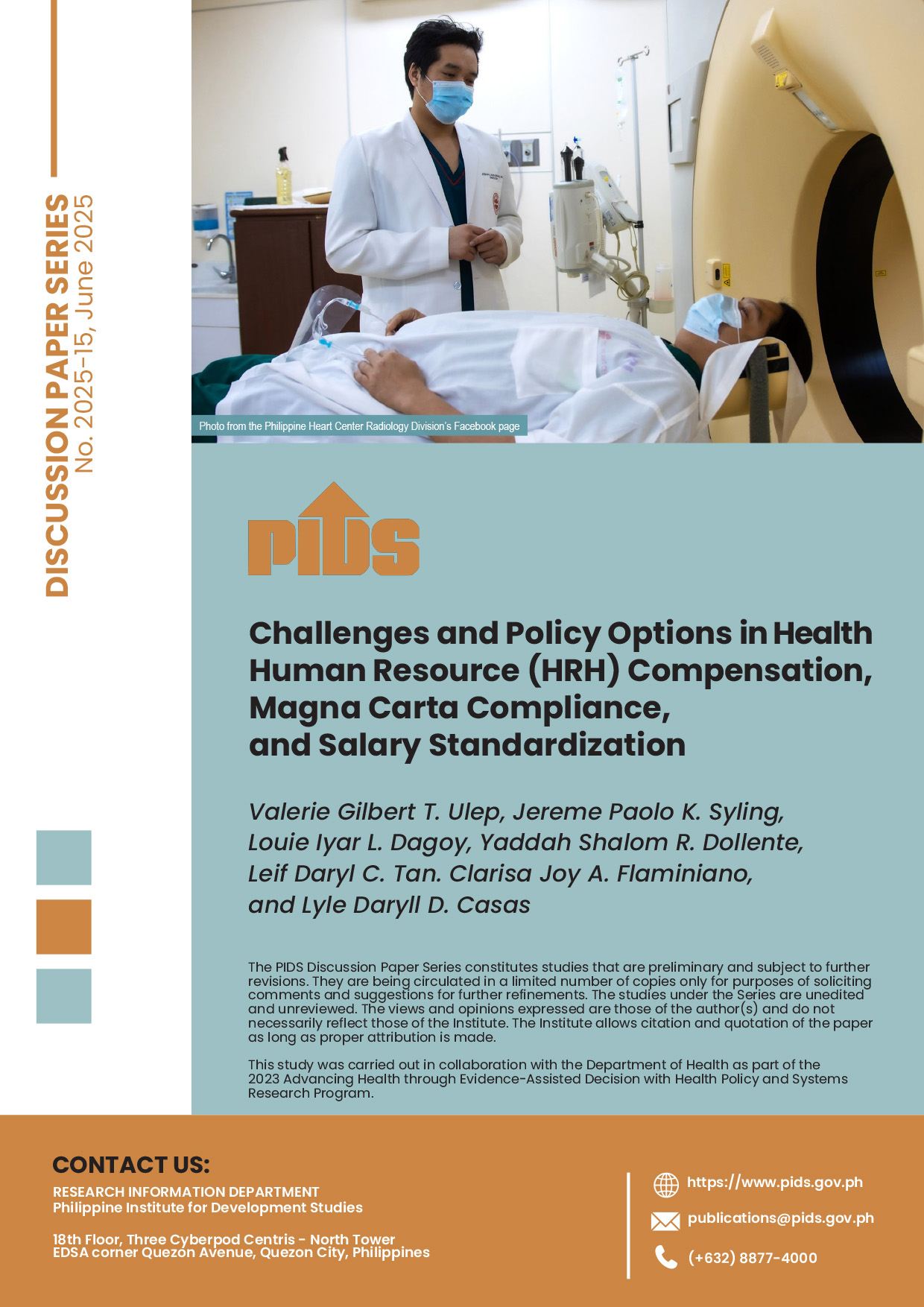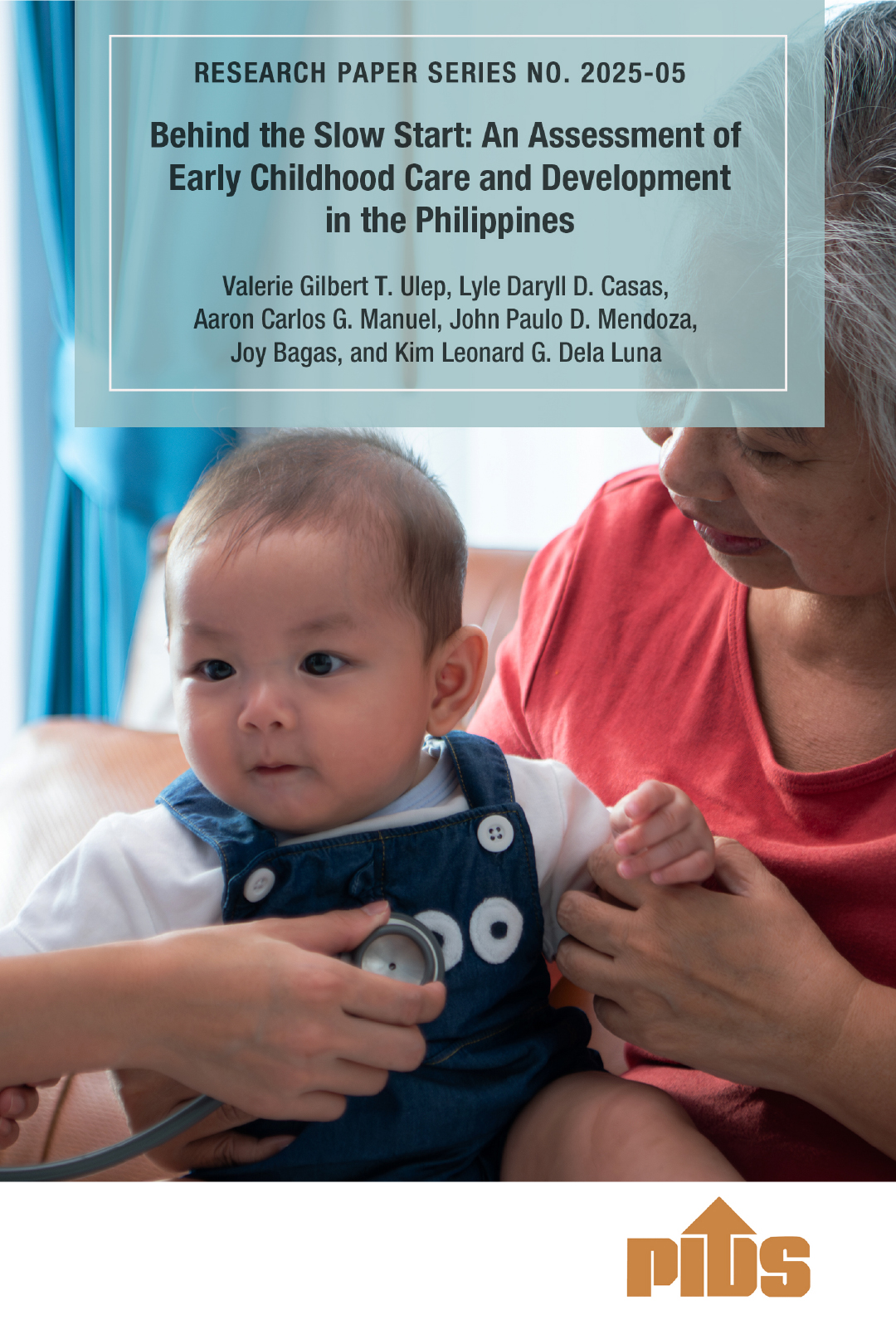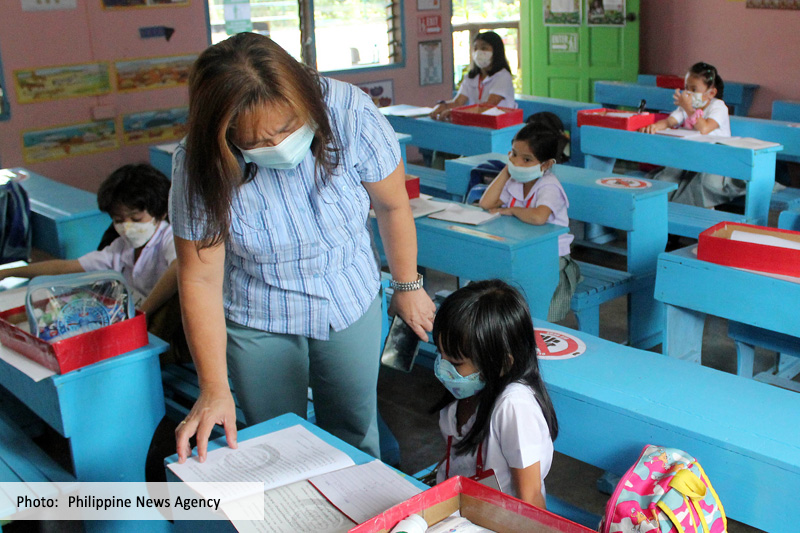Out-of-pocket health spending a major household expenditure – PIDS
Income and social inequalities still persist in the country even as the economy shows brisk growth, with out-of-pocket spending for health care remaining a major portion of household expenditure, state-think tank Philippine Institute for Development Studies (PIDS) said.
Given this, the government must expand its health benefit package for households, which should also include non-poor informal workers, PIDS said in a policy note.
PIDS said that operationally, out-of-pocket spending, or OOP, is defined as “any direct outlay by households, including gratuities and in-kind payments, to health practitioners and suppliers of pharmaceuticals, therapeutic appliances, and other goods and services whose primary intent is to contribute to the restoration or enhancement of the health status of individuals or population groups. It is a part of private health expenditure.
The level of OOP is an important indicator of an effective health-care system, it said.
“Ideally, an optimal health-care system should pacify irrational growth in health expenditures. It should also have the capacity to provide equitable financial protection, substantially reducing the amount that people pay for medical expenses,” it explained.
PIDS stressed that heavy reliance on OOP may lead the population to forgo or delay seeking care, or at worst, impoverishment.
It found out that basic social provisions, such as health care, remain generally inaccessible among the vulnerable segments of the population.
“Although social safety nets are in place to facilitate access (e.g., social health insurance and supply-side financing mechanisms), out-of-pocket (OOP) expenditures remain to be the major source of financing during health-care episodes,” it said.
Health expenditure rising
PIDS also noted total health expenditure in the Philippines is increasing both in nominal and constant terms.
In constant terms, there has been an increase by more than two folds in the last 12 years, from P159 billion to P347 billion, with rapid increases noticeable especially in the latter years of the decade, it said.
“Despite the significant rise in government and social insurance spending, OOP health expenditure remains the major source, which accounts for more than 50 percent of the total health expenditures,” it said.
The think tank pointed out that from 1991 to 2011, the average annual growth rates for government, social insurance, OOP and private insurance were 3.9 percent, 8.5 percent, 6.3 percent, and 9.5 percent, respectively.
“According to the Department of Health, the country targets to decrease the share of OOP by less than 50 percent and increase the share of social health insurance by 2016,” it said.
In the extreme, OOP payments could lead to poverty, it added.
For instance, it explained that about 18 percent of the population still live in poverty, and if OOP payments for health care are netted out, this percentage rises to 19.4 percent.
“Thus, 1 percent of the population become poor once health expenditure occurs,” it said.
‘Expand PhilHealth”
Going forward, the think tank recommends the expansion of the benefit packages of Philippine Health Insurance Corp. (PhilHealth), especially on outpatient medicines.
“The expansion should not be limited to the Sponsored Program, as selective benefit coverage losses the power of PhilHealth as the main purchaser. However, it should ensure that bene ts are cost effective and necessary,” it said.
Policymakers must also strengthen the provider payment mechanisms (PPM) of PhilHealth, it said.
“PPM is a powerful tool in controlling and stimulating the behaviors of consumers (patients) and health-care providers. Strategic PPM can optimize health-care utilization; therefore rational growth in health care expenditures is expected,” it explained.
Lastly, PIDS said policymakers should continue the movement to expand coverage, especially of non-poor informal workers, now the battleground sector in achieving full coverage.












